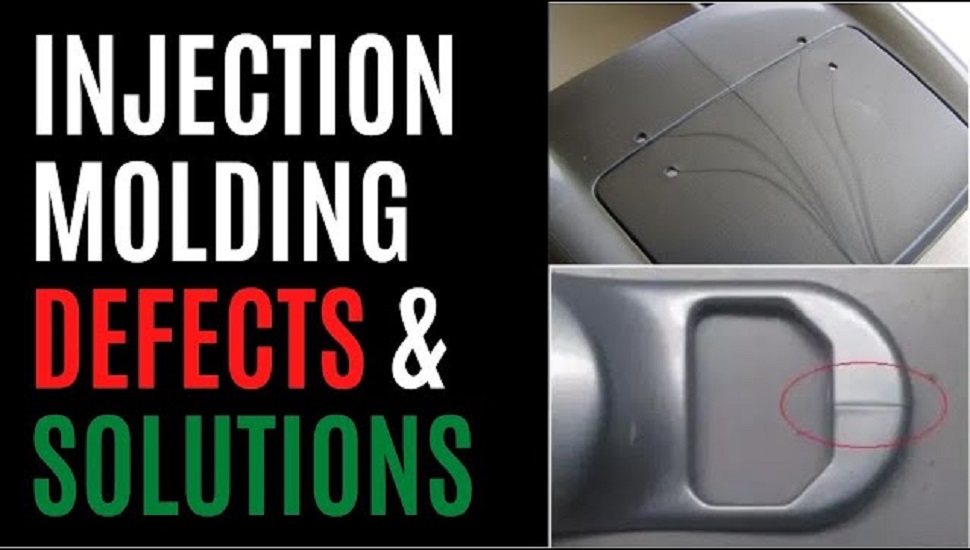Plastic injection molding is one of the most versatile and cost-effective manufacturing processes available today. However, like any manufacturing process, it comes with its fair share of potential defects and quality issues.
As a professional plastic injection molding manufacturer, I’ve seen these injection molding problems many times throughout my career. The good news is that most of these issues can be avoided with careful design, process control, and material selection.
In this post, I’ll walk through some of the most common injection molding defects, what causes them, and importantly, how to prevent them from happening in the first place. From aesthetic issues like sinks marks and flash to more functional problems like warpage and contamination, we’ve got you covered.

What is Plastic Injection Molding?
Before jumping into the defects, let’s start with a quick overview of the plastic injection molding process itself. Essentially it works like this:
- Plastic pellets are fed into the injection molding machine through a hopper
- The pellets are heated to a molten state
- The liquid plastic is injected under high pressures into a steel mold
- It cools and solidifies into the final plastic part
- The part is then ejected from the mold
This process enables high volume production of plastic parts with accuracy and repeatability. It’s used to make everything from small consumer device components to large automotive body panels.
Now that we have the basics covered, let’s get into those pesky injection molding issues…
Common Plastic Injection Molding Problems and Solutions
1. Sink Marks
Sink marks refer to small surface depressions or voids that form on thicker areas of an injection molded plastic part. They occur when the interior of the part cools at a slower rate than the outer sections. The outer plastic skin solidifies first and contracts, pulling material from the core.
How to prevent sink marks:
- Increase holding pressure and time to pack the mold
- Increase cooling times to allow even solidification
- Use materials with low shrinkage rates
- Design uniform wall thicknesses
2. Warpage and Distortion
Just like it sounds, warpage is when the final injection molded part becomes distorted, twisted or bent during cooling. Non-uniform shrinkage leads to internal stresses in the part. If severe enough this can cause loss of dimensional tolerance and scrap parts.
Fixes for plastic part warpage:
- Lower melt temperatures to reduce cooling time
- Design the part with symmetric uniform wall thicknesses
- Anneal the part after molding to eliminate residual stresses
3. Weld Lines
Weld lines show up on the part surface where separate melt flow fronts come together in the mold cavity. They form a visible seam line or discoloration. Weld lines are generally aesthetic defects but can also weaken strength.
How to prevent weld lines:
- Increase injection pressures and speeds for better flow
- Use lower viscosity materials that flow easier
- Raise melt and mold temperatures
- Relocate gates and runners
4. Flash
Flash refers to excess material that escapes from the mold cavity and sticks to the parting line. It must be trimmed manually after molding. Flash is usually indicative of issues with the mold fit, material properties or processing parameters.
Solutions for flash defects:
- Increase mold clamping force
- Lower injection speed and pressures
- Reduce material and mold temperatures
- Ensure proper venting
5. Short Shot
Short shots occur when the mold cavity fails to completely fill with plastic. This leaves sections of the part incomplete. Flow restrictions in the mold commonly cause short shots. They can also result from low injection pressure, high material viscosity or inadequate venting.
How to avoid short shots:
- Redesign the mold with bigger gates and runners
- Choose a material with lower viscosity
- Increase injection speed, pressure and duration
- Raise mold temperatures
6. Contamination and Discoloration
Contamination and discoloration defects occur when foreign matter mixes with the plastic resin during molding. Common sources are degraded materials, leftover pellets, poor color dispersal, etc. The results are visually unappealing parts.
Fixes for contaminated, discolored parts:
- Improve handling procedures for plastic resin
- Use higher quality materials from reliable suppliers
- Increase purging to remove contaminants
- Improve mixing of colorants
- Regular mold cleaning and maintenance
In Summary
And there you have it – 6 of the most common injection molding problems and how to prevent them through smart design and process control. While molding defects can never be fully eliminated, following these guidelines will put you well on your way to high quality, functional end-use parts.
Now I’d like to hear from you – what injection molding issues have you struggled with? How did you solve them? Let me know in the comments section below!